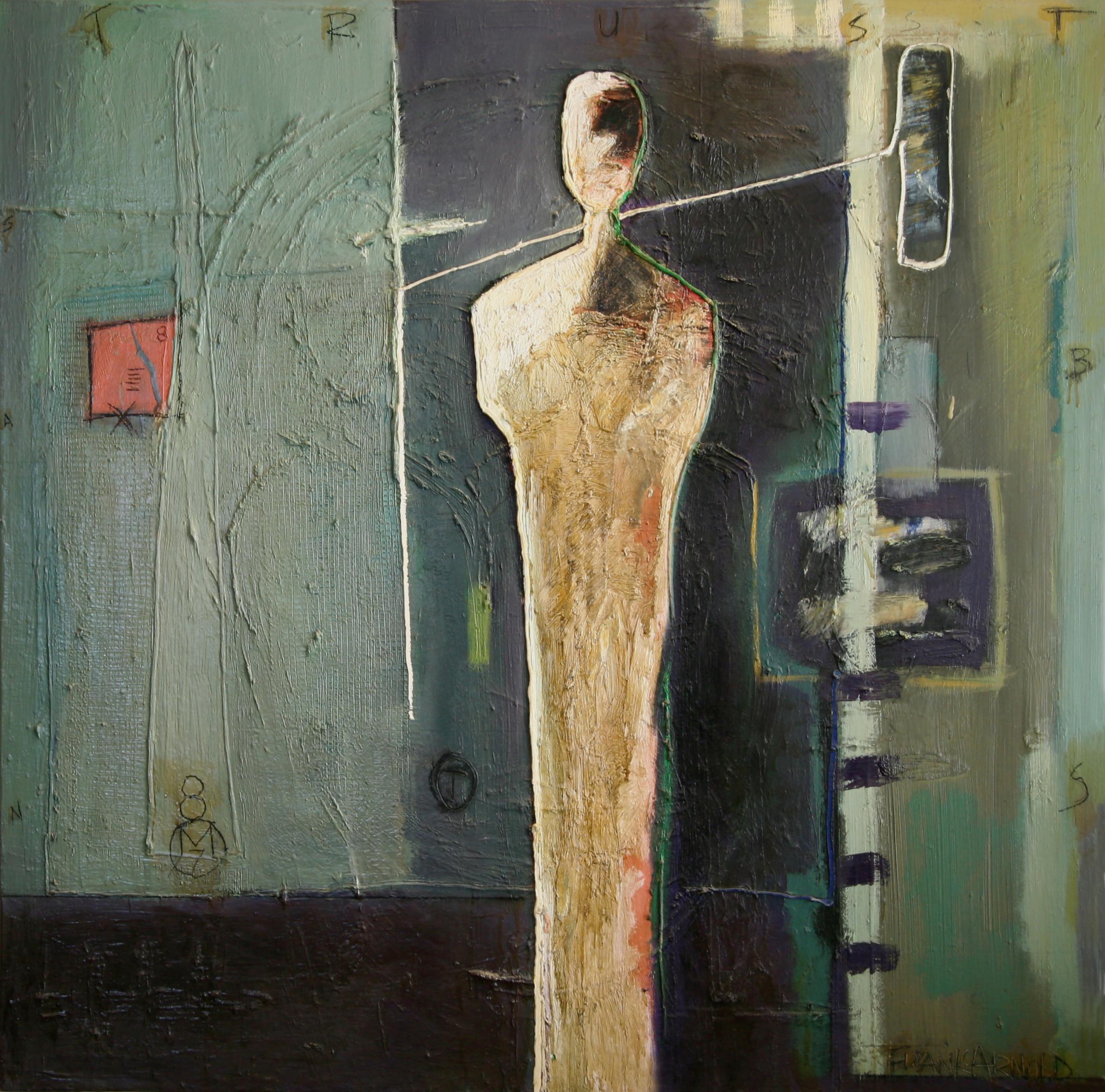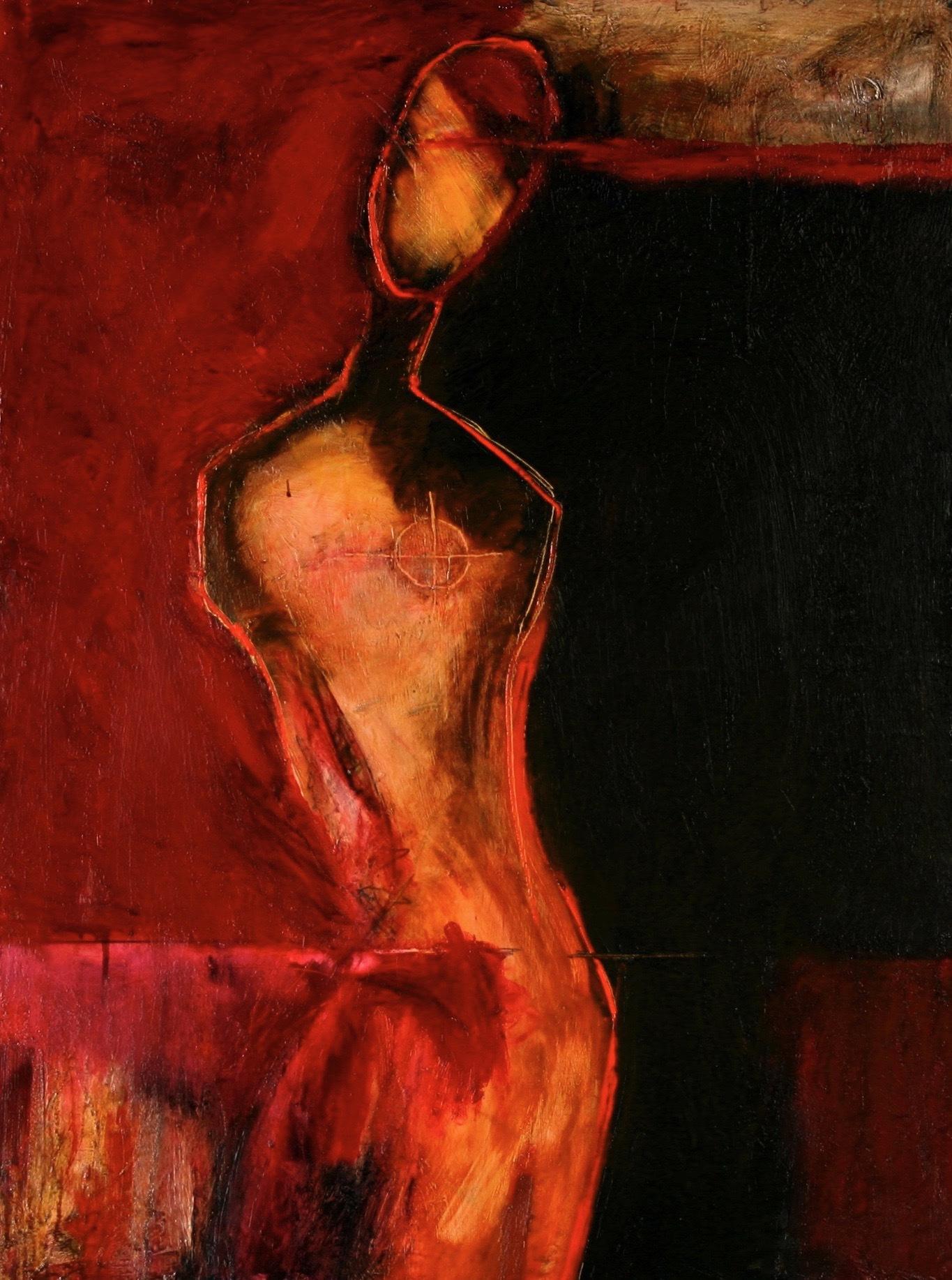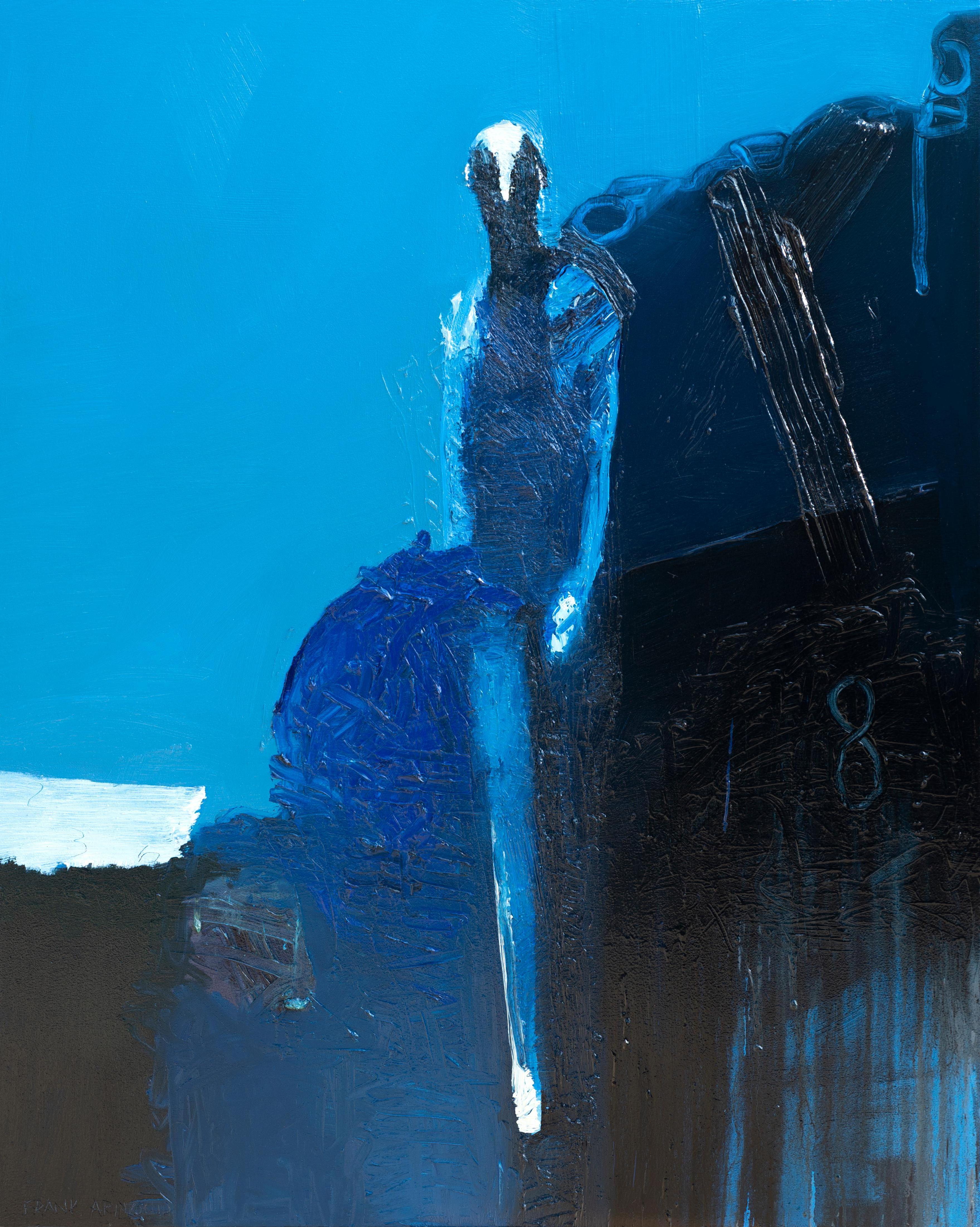Items Similar to Afternoon tea , 1912 Oil on canvas Auguste Moreau-Deschanvres (1838-1913)
Want more images or videos?
Request additional images or videos from the seller
1 of 8
Auguste Moreau-DeschanvresAfternoon tea , 1912 Oil on canvas Auguste Moreau-Deschanvres (1838-1913)
About the Item
Auguste Moreau-Deschanvres (1838-1913)
A student of Julien Potier at the Valenciennes academic schools, the painter Auguste Moreau-Deschanvres (1838-1913) lived in the house-studio he had built for himself in Saint-Saulve, where he devoted himself to photography with his daughters, sometimes reconstructing delicious tableaux vivants. Essentially devoted to portraits and genre scenes - more rarely to religious painting - his career was punctuated by submissions to the Salons, mostly in the north, but also in Paris.
Moreau-Deschanvres was especially responsible for several portraits of Jean-Baptiste Carpeaux. The first, dated 1873, was probably made from a photograph and shows a sick and ageing Carpeaux against a dark background. The second, a grisaille medallion, was painted to decorate "the catafalque of the chapelle ardente erected under the porch of the Acacémies in Valenciennes on 29 November 1875. It was deposited in 1924 in the Musée des Beaux-Arts of the city of Valenciennes. The third, and most important, was probably inspired by the photograph published in the "Galerie contemporaine littéraire et artistique". Moreau-Deschanvres had offered to paint a portrait of the deceased sculptor for the historical gallery of the Fine Arts section of the Valenciennes Agricultural Society. In 1876, Moreau-Deschanvres sent his Carpeaux in his studio to the Paris Salon. With his face supported by a hand, in a melancholic posture, the sculptor contemplates us with a feverish look while two of his emblematic works are looming behind him: the Child with a Shell and The city of Valenciennes defending the fatherland, destined for the pediment of the town hall. This large portrait is now in the collections of the Musée des Beaux-Arts.
- Creator:Auguste Moreau-Deschanvres
- Dimensions:Height: 20.87 in (53 cm)Width: 25.6 in (65 cm)
- Medium:
- Period:
- Condition:
- Gallery Location:Gent, BE
- Reference Number:1stDibs: LU2140213826852
About the Seller
5.0
Vetted Seller
These experienced sellers undergo a comprehensive evaluation by our team of in-house experts.
Established in 2018
1stDibs seller since 2022
Typical response time: 16 hours
- ShippingRetrieving quote...Ships From: Gent, Belgium
- Return PolicyA return for this item may be initiated within 10 days of delivery.
More From This SellerView All
- Obersee by François Roffiaen (1820-1898) Oil on canvasLocated in Gent, VOVThe Watsman, a painted view between Obersee and Koningsee, Upper Bavaria. Study painted in 1856 by François Roffiaen. François Roffiaen (1820-1898): Biography François Roffiaen's f...Category
19th Century Figurative Paintings
MaterialsCanvas, Oil
- The blind man, oil on canvas by Maurice LangaskensBy Maurice LangaskensLocated in Gent, VOVA masterfully painted scene originating from the artist's studio In this painting, Langaskens brings together several motifs that were also the subject of his graphic work: the blind man, the priest, the nun and the farm that also appears in the famous etching "les toits rouges" (the red roofs). These elements are brought together in a dynamic and colourful composition, where the similarities to that other Belgian painter, Anto Carte, are striking. Combining these elements in this way creates a certain tension. Is the work about mercy (helping a blind man), or are we spectators of a scene where a poor wretch's purse is stolen? Striking is the use of impasto, in which the painter emphasises the texture of fabrics and skin via flowing lines. Maurice Langaskens 1884 - 1946 Biography A Belgian painter and printmaker, Maurice (Maurits) Langaskens enrolled in the Académie Royale des Beaux-Arts in Brussels in 1901, and was trained as a decorative painter by the leading Belgian muralist and sculptor Constant Montald. From early on, Langaskens was recognized as a fine draughtsman, and won several prizes at the Académie. After living and studying for a few months in France in 1906, mainly in Dijon, the young Langaskens settled in Schaerbeek, outside Brussels. He began his independent career in 1907, when he exhibited three decorative paintings at the Salon in Brussels for the first time and also had an exhibition of his work shown at the Salle Boute in the city. The following year he contributed six paintings to the 16th annual exhibition of the Belgian artist’s association ‘Pour l’Art’ in Brussels, where he was to exhibit frequently over the course of his later career, until 1941. (Langaskens also designed the poster for the 17th ‘Pour l’Art’ exhibition in 1909.) Also in 1908, one of his paintings was selected for an exhibition of modern Belgian art in Berlin. Much of Langaskens’s early work was in a vibrant and visually arresting Art Nouveau or Symbolist style. This bold and colourful manner also translated well into large-scale mural commissions, and he soon became one of the leading painter-decorators of the early 20th century in Belgium. His decoration of the town hall of the city of Zoutleeuw in 1912 earned the artist considerable fame and the praise of his teacher and mentor Montald: ‘He was one of the best students in the class; today he is the most outstanding artist among the decorators of our time.’ The same year the first of several exhibitions of Langasken’s work was mounted at the Cercle Artistique et Littéraire in Brussels. The outbreak of the First World War, however, brutally interrupted the rise of the artist’s successful career. Drafted into the Belgian army at the beginning of August 1914, Langaskens was captured by the Germans after less than a fortnight. He spent the next three and half years as a prisoner of war, at internment camps at Sennelager, Münsterlager and Göttingen. He produced numerous, mostly small-scale paintings and watercolours of portraits and depictions of many of his fellow prisoners, as well as scenes of daily camp life, that are today regarded as among his finest and most personal works. It was also during this period that he painted two of his best-known pictures, the large canvas In Memoriam, painted in 1916 and depicting the burial of a Belgian soldier by his comrades, and the monumental triptych Repose en Paix, painted between 1915 and 1918. After his liberation and return to Belgium, Langaskens exhibited over eighty of the paintings and drawings that he had produced as a prisoner of war at the Galerie Sneyers in Brussels in 1918. After the Armistice, Langaskens - suffering from aphasia and nervous disorders brought about by his long confinement - painted mainly easel pictures of winter landscapes, rustic genre scenes and floral subjects, and also produced a number of designs for tapestries, book illustrations and stained-glass windows. Within a few years, however, his health had recovered and he returned to undertaking large-scale decorative mural commissions. In 1920 Langaskens was one of the founders, alongside Montald, Jean Delville, Emile Fabry...Category
20th Century Figurative Paintings
MaterialsCanvas, Oil
- Boy with a fluteBy Leon HerboLocated in Gent, VOVLéon HERBO (1850-1907), Young boy with a flute, oil on canvas, signed upper left and dated 1879. This painting seems inspired by the painting "Singing Boy with a Flute" by the Dutch ...Category
Late 19th Century Dutch School Figurative Paintings
MaterialsCanvas, Oil
- Washerwomen by the river, oil on canvas by Karl GirardetLocated in Gent, VOVThis painting is part of a series of paintings Girardet made of washerwomen by the river. Upon their presentation they had a considerable success, which endures till now. In 2008 another painting of this series was sold at Christie's . Karl Girardet was born in 1813 in Le Locle, which at the time was part of France but is now part of Switzerland. Girardet lived and worked most of his life in Paris. After beginning his career as a painter of landscapes, he became a well-known history painter. As a confidant of the French king Louis Philippe I...Category
Late 19th Century Realist Figurative Paintings
MaterialsCanvas, Oil, ABS
- Horses resting at the watering place Oil on canvas by Jules Pierre Van BiesbroecLocated in Gent, VOVHorses resting at the watering place Oil on canvas by Jules Pierre Van Biesbroeck Jules Van Biesbroeck was born in Italy in 1873 during h...Category
20th Century Figurative Prints
MaterialsOil, Canvas
- Farmer busy eating his lunch, (I think he's just boozing) by Axel SoeborgLocated in Gent, VOVSøeborg, Axel (1872-1939) The ochre yawn of autumn and the bitter sleep of winter are the preoccupations of Danish artist Axel Søeborg's landscapes. With his singular hand, Søeborg s...Category
20th Century Modern Figurative Paintings
MaterialsCanvas, Oil
You May Also Like
- New MoveBy Frank ArnoldLocated in Fresno, CA"New Move 8" Oil on Canvas is a mix of blues and greens with chrome yellow accents. Frank Arnold is thought by many to be one of the foremost abstract figurative painters and sculpto...Category
2010s Abstract Abstract Paintings
MaterialsCanvas, Oil
- Humming Bird IIBy Jamel AkibLocated in Battle, East SussexJamel Akib Born in Leigh-on-sea, Essex in 1965 to English and Malaysian parents, Jamel moved to North Borneo at the age of five. At thirteen he returned to England to pursue his edu...Category
21st Century and Contemporary Contemporary Figurative Paintings
MaterialsCanvas, Oil
- Separation of Creation Oil PaintingBy John U. AbrahamsonLocated in Rio Vista, CADramatic oil on canvas surrealist painting by John Abrahamson (American 20th Century) depicting a nude male with the motto Partitus Ero or I wager in Latin. Abrahamson is known for h...Category
20th Century Surrealist Figurative Paintings
MaterialsOil, Canvas
- 20th century oil painting entitled The Unknown CornerLocated in London, GBCollections: Robert Isaacson; James Draper, New York, 2014. Exhibited: Cambridge, The Fitzwilliam Museum, Beggarstaffs: William Nicholson and James Pr...Category
Early 20th Century Modern Figurative Paintings
MaterialsCanvas, Oil
- 18th century oil sketches for a Baroque interior - a pairLocated in London, GBA FEAST OF THE GODS WITH VENUS AND BACCHUS Collections: With Appleby Brothers, London, June 1957; Hazlitt, Gooden & Fox, London, 1961; John and Eileen Harris, acquired from the above, to 2015. Literature: Jacob Simon and Ellis Hillman, English Baroque Sketches: The Painted Interior in the Age of Thornhill, 1974, cat. no.12 (as by Louis Laguerre); Elizabeth Einberg (ed.), Manners and Morals: Hogarth and British Painting, 1700-1760, exh. cat., London (Tate Gallery), 1987, cat. no.10 (as by Louis Laguerre); Tabitha Barber and Tim Bachelor, British Baroque: Power and Illusion, exh. cat., London (Tate Britain), 2020. Exhibited: Twickenham, Marble Hill House, English Baroque Sketches: The Painted Interior in the Age of Thornhill, 1974, no.12 (as by Louis Laguerre); London, Tate Gallery, Manners and Morals: Hogarth and British Painting, 1700-1760, 1987, no.10 (as by Louis Laguerre); London, Tate Britain, British Baroque: Power and Illusion, cat. no 92, 2020. CUPID AND PSYCHE BEFORE JUPITER Collections: With Appleby Brothers, London, June 1957; Hazlitt, Gooden & Fox, London, 1961; Anthony Hobson, acquired from the above, to 2015. These recently re-united paintings are the most ambitious surviving baroque ceiling sketches made in Britain in the early eighteenth century. From the Restoration until the rise of Palladianism in the 1720s decorative history painting formed the preeminent artistic discipline in Britain. It was a field dominated by Continental artists including the Italian Antonio Verrio and the Frenchmen Louis Laguerre and Louis Chéron...Category
Early 18th Century Baroque Figurative Paintings
MaterialsCanvas, Oil
- Untitled (Jai Lai)Located in Beverly Hills, CAProvenance: Ibid Projects Private collection, Los AngelesCategory
Early 2000s Contemporary Figurative Paintings
MaterialsCanvas, Oil





